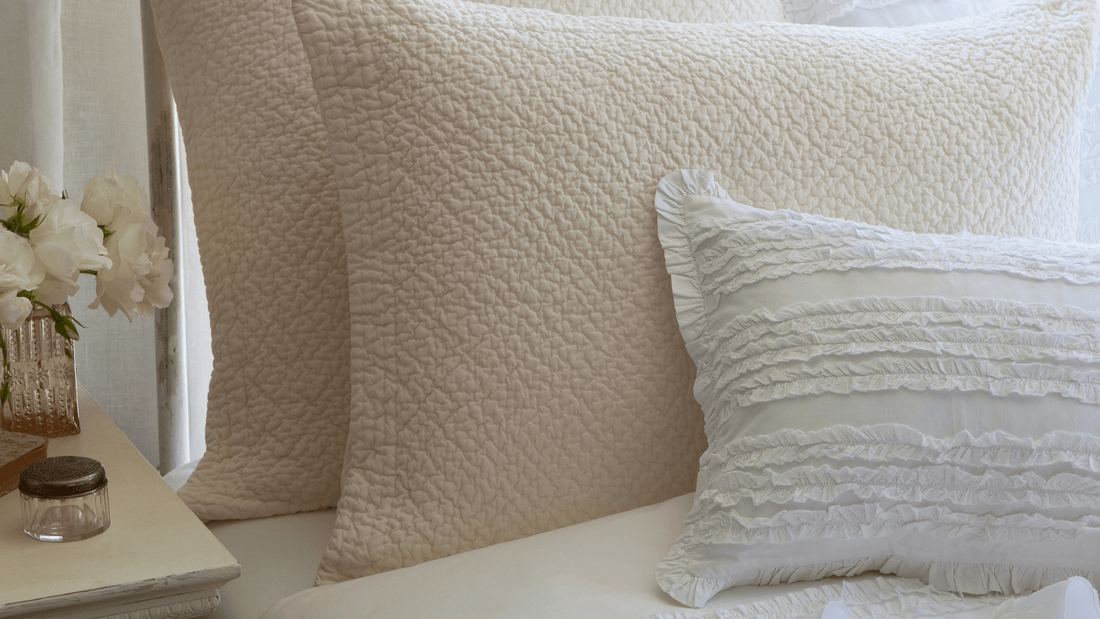All you need to know about buying the right pillow

A pillow may appear like a simple thing to purchase, but it can be complicated and costly to obtain the right one. There are numerous fills and levels of firmness for pillows. Pick a faulty pillow and you could simply lose sleep over it.

If you are using a worn-out pillow or squeezing and folding it up all night to get comfort, it is an indication to get a new one. Even if your pillow is not deflated, it may not be the ideal choice for the support and comfort your body needs.
That is we have gathered insights from pillow experts to uncover the critical things you must know before purchasing a pillow. There are wide-ranging pillow tests that combine technical evaluations such as measuring pressure points for appropriate head support and real-world assessments from a committee of human subjects on considerations such as a pillow’s comfort level and feel.
Why does the right pillow matter?
Getting the proper pillow can significantly enhance the quality of sleep as it eases the sleeping posture. Correct sleeping posture facilitates good sleep and makes you wake up without any aches or pains.
The correct pillow will ensure that your spinal column stays aligned while you sleep, irrespective of your favored sleeping position. With a cushion that supports correct posture, your shoulders, neck, hips, and back will gain the support they require so you wake up without any discomfort.

If your shoulders and neck do not get adequate support, or if they are held up at an angle that triggers craning, crunching, or twisting, it would put your body and spine out of alignment, leading to discomfort and strain in your shoulders, neck, back, and will cause sleeplessness. Just like a mattress, support and comfort are both essential while picking the right pillow. The ideal pillow is one that feels comfy to rest your head on and supports your neck, shoulders, and head.
When should you replace your pillow?
Unlike mattresses, pillows do not last long, and you will need a new one every one and a half years or so. A good quality memory foam pillow is an exception and can last for about 3 years. Here are a few ways that you can tell that it is time to purchase a new pillow:
- Take a thorough look at your pillow. Are there any stains, tears, or holes? Does it stink? If the answer is “yes” to any of these questions, it is time to get rid of your pillow.
- If it clears the physical examination, go for the fold test. When you fold it in half, if it stays folded, it means your pillow has worn out, and it is time to find a new one.
- If your pillow is lumpy or too flat, it is time to replace it.
An ideal pillow is supportive and comfortable. Memory foam pillow is highly recommended by sleep experts as it is excellent for all sleeping positions.
What are the various fill or fiber options for your pillow?
There is a wide range of fill choices for pillows. No one particular alternative is best as all have their own benefits and drawbacks, based on your preferences and needs. Here are some of the most popular types:
Cotton:
Cotton pillows are resistant to mold and dust mites and are inherently hypoallergenic. Cotton pillows remain flat and firm and are often a smart choice for people with chemical sensitivities and allergies. However, cotton pillows may also lose their shape more rapidly than other types, so they require regular reshaping.
Memory Foam:
Polyurethane is the chief raw material used to make memory foam. Memory foam easily changes shape when pressure is applied but quickly returns to its original shape when the pressure is taken off. This lets the foam adjust to your body’s shape and offers you extra neck and head support.
Fibre pillow:
Fibre pillows or natural fibre pillows provide adequate support to your head and they match down pillows in terms of offering comfort. They are strong, and they provide uniform support across the entire pillow. They also help you get good sleep as they are cooler, and they do not retain heat.
Microfiber pillows on the other hand comprise fine synthetic material strands, such as nylon or polyester. These are more affordable and are easy to maintain at home, but they may have to be replaced every few years.
Latex:
Latex pillows hold their shape and are resistant to dust mites and mold.
Contoured pillows intended to provide additional support to the neck and head and curb movement during sleep.

Consider your sleeping position before you shop
While the pillow you select is generally based on your individual preference, getting the right pillow also hinges on your sleeping position. Your sleeping position will ascertain the extent of support you require from your pillow.
- For people sleeping on their stomach, the back and neck will be extremely stressed, so experts advise them to try and sleep in a different position. Since it is difficult to alter one’s sleeping habits quickly, so if you sleep on your stomach, you will need a pillow that is soft and a little less full. This will keep your spine neutral.
- For side sleepers, the pillow must keep the head in a neutral stance, maintaining alignment with the spine. As the shoulder bears the pressure while sleeping on the side, you may need a firmer pillow that will provide your neck with the support it requires and take the weight off your shoulder.
- If you sleep on your back, your pillow must support your head and neck, but only to an extent that your neck is not propped up at an unusual angle. Bear in mind that you want your neck and spine to remain aligned while you are lying down, so back sleepers perhaps should use a medium-dense pillow, something that is not excessively full, but not overly flat.
Choosing the pillow size & height
For most people, a standard-size pillow is sufficient. If you choose a larger pillow that is okay, given you can keep your posture aligned. The thinness or thickness of the pillow should allow you to sleep with your neck, shoulders, and head aligned with your spine, as well as offer comfort. Make sure the pillow case and pillow cover fit properly. Do not stuff a large pillow into a small cover or let a standard-size pillow swim in a large pillow case.
If you need extra comfort, you can opt for dual-height pillows that are made using hyper soft foam. Such pillows will offer you adequate and customized support balanced with the correct amount of comfort. You will also get more effective neck support with dual height that will keep your head stay relaxed.
Other important factors to consider
- Side sleepers will need a fuller pillow that covers the gap between the upper back and shoulder blades and the bed. It will make sure that the neck is aligned with the spine instead of being angled to prevent any stress. Back sleepers must use flatter pillows as the gap is much smaller, because of the curve of the shoulder blades and upper back. If you sleep on your stomach, a thin pillow is enough to maintain the neck’s natural curve.
- Invest in a good quality branded pillow that offers suitable support to your neck and head. If you wish to purchase a pillow online, make sure you go through the product description and specifications carefully besides its features and dimensions. Opt for a branded pillow to avoid any forged or duplicate products.
- Lastly, if you have a firm mattress, then a soft pillow is better, because the pillow is resting on a firm surface and has to adjust to the weight of your head in your sleep position. For a soft mattress, a firmer pillow is better to keep your neck and head aligned.

Just keep in mind that a healthy sleeping posture is the most critical thing, and once you have achieved that with your pillow and your mattress, you are ready to get the most restful sleep.








